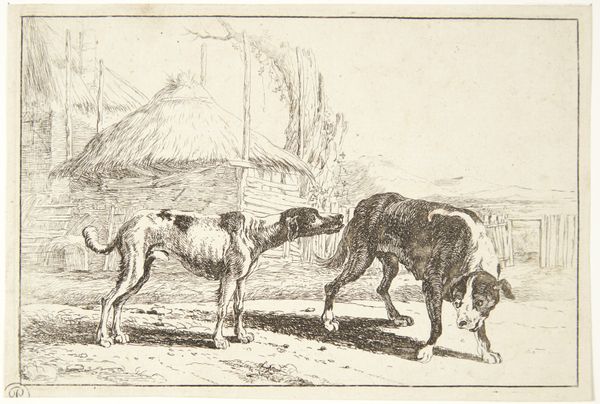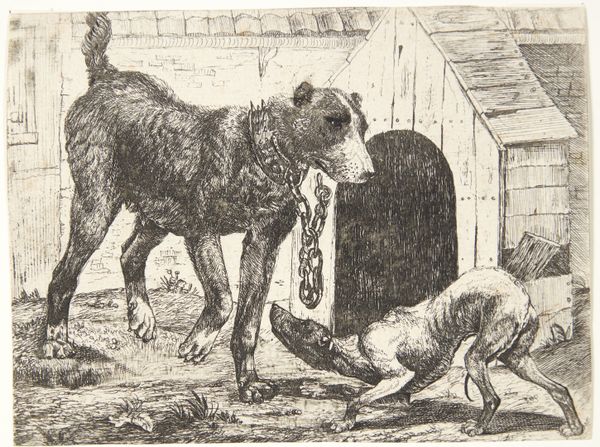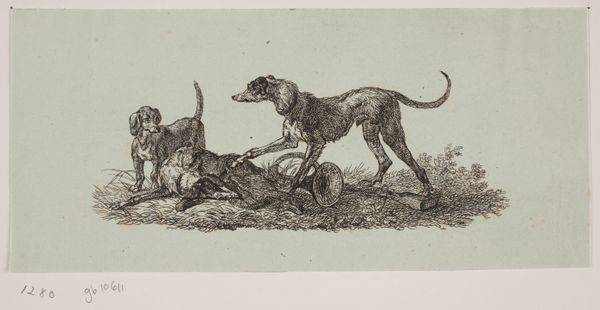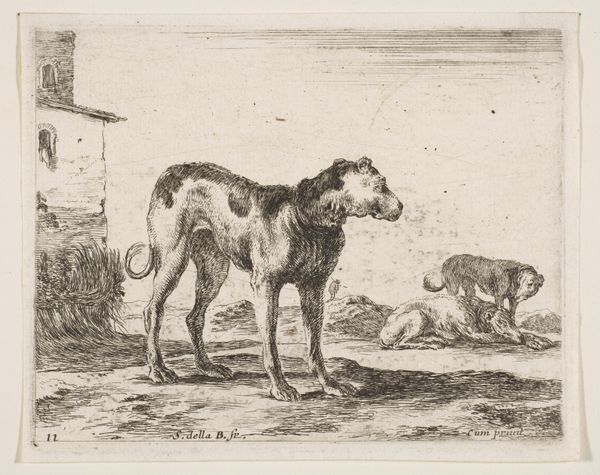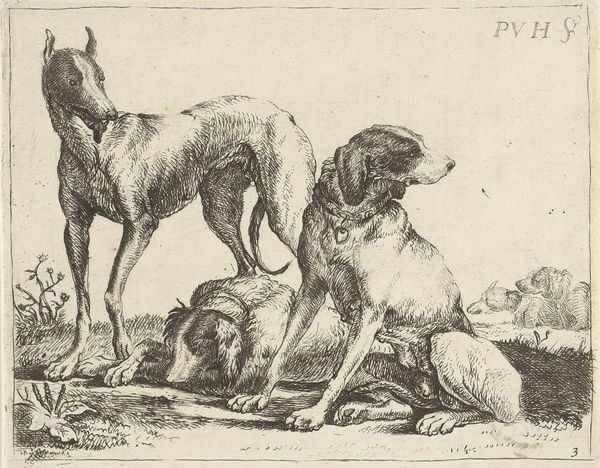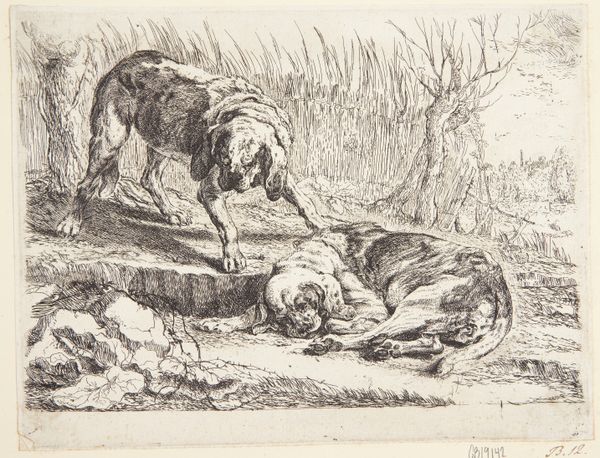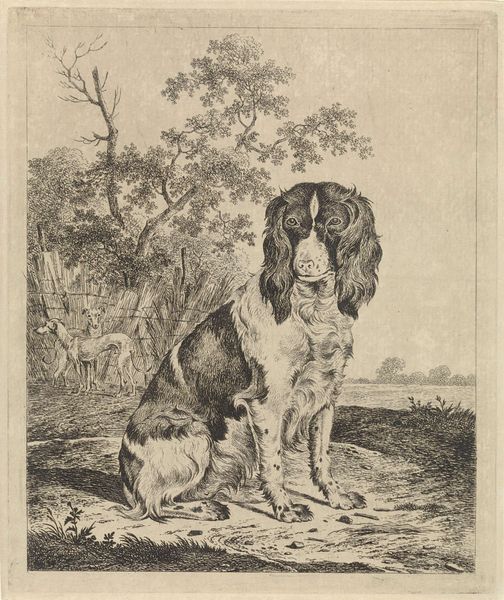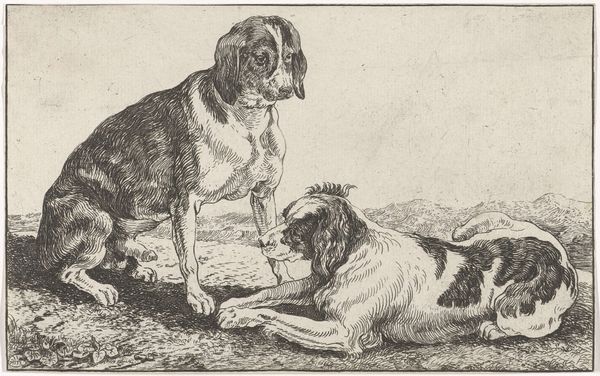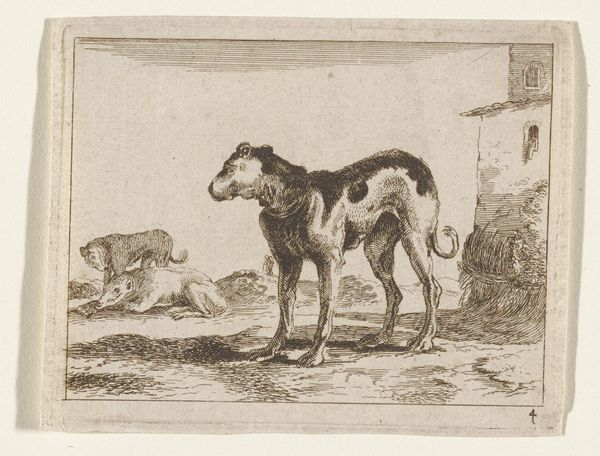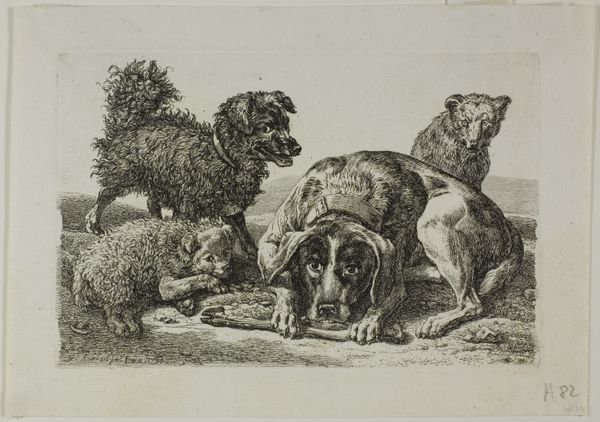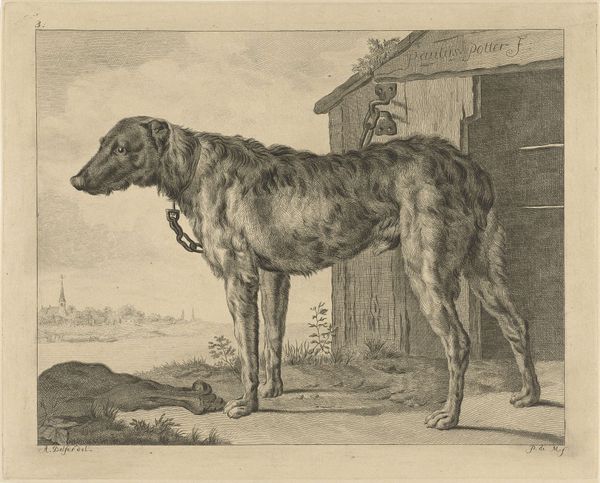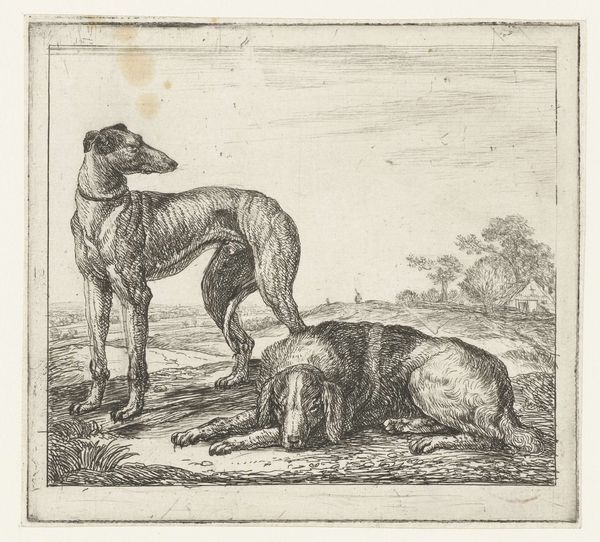
drawing, print, etching, ink
#
drawing
#
ink drawing
#
baroque
# print
#
etching
#
landscape
#
ink
#
genre-painting
Dimensions: 107 mm (height) x 160 mm (width) (plademaal)
Curator: This is "Hundekennel," an etching by Jan van den Hecke I, created sometime between 1619 and 1684. Editor: What strikes me immediately is the density of lines, the raw quality. It's so unpolished, so much about the texture and physical impression of the ink. Curator: Right, consider the cultural moment. Genre painting was solidifying as a distinct category, reflecting everyday life. How might this relate to social structures and even class? These dogs are rendered almost like working-class individuals; consider Foucault's writings on visibility. Editor: Indeed, it invites questions about the production of the etching itself: the physical act of creating the plate, the labor involved, and then, crucially, who was consuming these prints? Were they luxury items, or part of a broader system of visual culture available to more people? It seems a print for practical use as pattern in pottery than some exquisite artwork. Curator: Absolutely. Furthermore, there’s the power dynamic inherent in representation. Van den Hecke isn’t merely depicting dogs, but assigning them specific roles within this "kennel" – resting, guarding, observing. Is there a metaphor here for social roles, for obedience, for visibility? And where do we, the viewers, fit within this visual order? The gaze implies relations of power. Editor: The materiality definitely guides me toward such reading: the lack of refinement makes you think the labor implied on it. Look at the hurried crosshatching used to build volume, a practical rather than purely aesthetic concern. One thinks about what kind of printmaking shop it came from: Were children employed doing that kind of job at the time, or perhaps women, who did not necessarily had a name or were not able to make a statement through art and craft production? Curator: Excellent point, and one must also consider that these works were likely part of larger systems of knowledge production, perhaps serving as studies for paintings, thus linking craft to 'high art.' Editor: Reflecting on this, I see how easily the art object opens into inquiries about labor practices and its reception—that the object can lead toward understanding material and labor within social and economic frames. Curator: And I see the convergence between our approaches; that through the physical creation, we see social, and, yes, material implications, expanding from craft toward complex themes like agency and the control of knowledge.
Comments
No comments
Be the first to comment and join the conversation on the ultimate creative platform.

